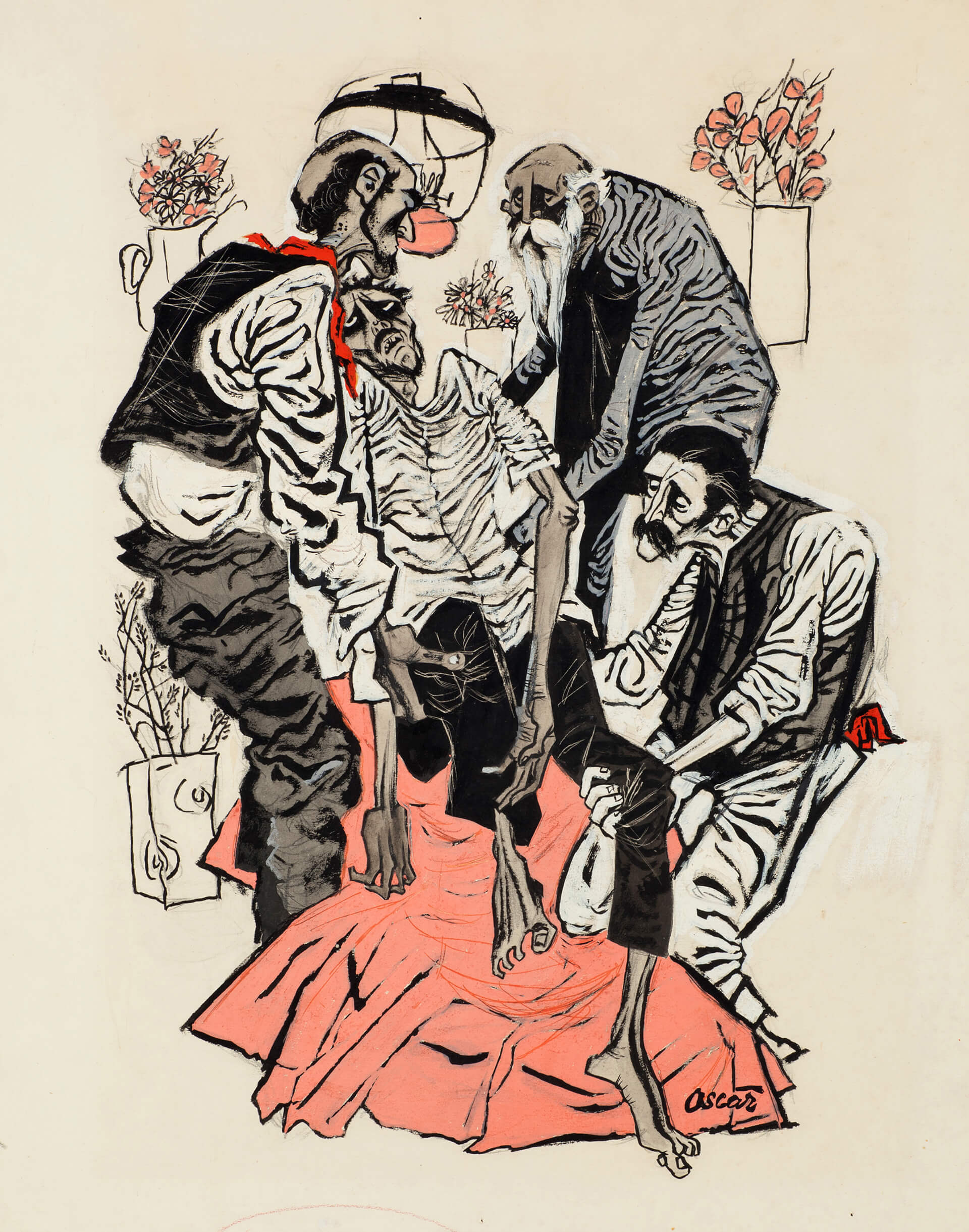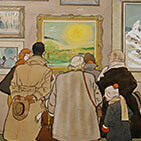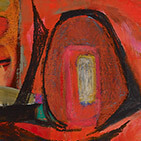Illustration for “The Californian’s Tale” 1947

Oscar Cahén, Illustration for “The Californian’s Tale,” by Mark Twain, published in New Liberty, January 24, 1947
60.6 x 44.8 cm
Private collection

Oscar Cahén believed that illustration could and should stretch the public’s aesthetic sophistication and that it was capable of embodying “those fundamental emotions which are expressed in good [fine] art work.” German Expressionism, to which Cahén would have been well exposed in Europe, and Gothic art, of which he collected reproductions, inform his distortions of figures for Mark Twain’s tale about a heartbroken, mentally unsound old miner. Rendered in heavily outlined impasto gouache, the men enact a scene reminiscent of Gothic iconography in which a hollow-eyed, cadaver-like Jesus descends from the cross. The emaciated limbs and angular hands and feet of the Twain characters recall lost paintings by Cahén of a Belsen concentration camp victim and a drowned woman as well as his paintings of Christ and Praying Man of 1947.
New Liberty—which had just been acquired by Canadian publishers and made independent from the originating American publisher of Liberty—commissioned many such illustrations that were decidedly more outré than other periodicals would risk, probably because it helped them secure a distinct identity. The appearance of The Californian’s Tale and others provoked complaints from readers: “Do you keep your illustrator Oscar in a padded cell? No one in their right mind could think up such repulsive and hideous things to represent human beings,” jeered one. But among Cahén’s peers, the illustration for “The Californian’s Tale” was well received. It was chosen for the 1949 exhibition of the Art Directors Club of Toronto by popular vote of its membership.
The unnerving images Cahén drew for New Liberty marked an important turn in Canadian illustration where Canadians began to break with prettified American standards. These, and related Expressionist works such as Praying Man, 1947, led his friend James Imlach, who had moved to the United States, to say in 1948, “You [Cahén, Harold Town, and Walter Yarwood] can start a new and lively school of art in Canada devoid of the stiff realistic rendering of the British influence on the colonies.”

 About the Author
About the Author
 More Online Art Books
More Online Art Books
 Acknowledgements
Acknowledgements